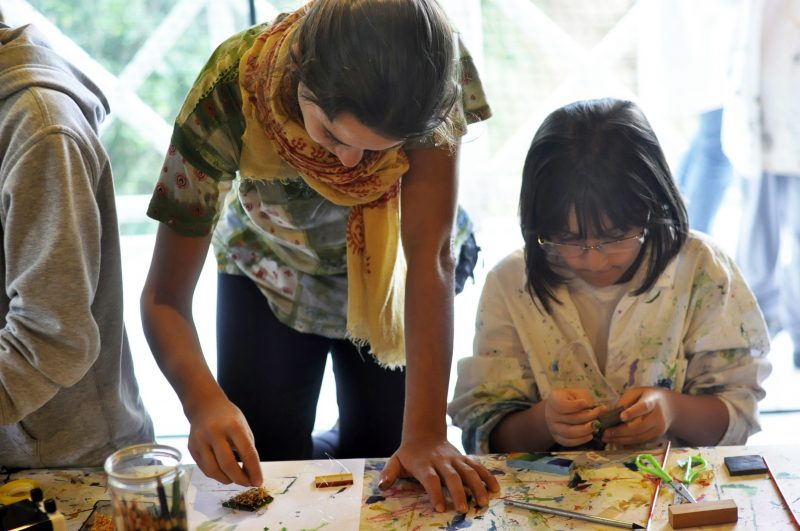The Open Source Process: A New Definition of Success
Posted on November 22, 2016Open source is a process of making and using things. The outcome of this process is usually a software – but could it be something else? The term ‘open source’ refers to something people can use, modify, share and enhance the way they want it, for free. This method of production is questioning the meaning of ownership, development – and can potentially change our social organizations. Although today this process is only successful as a model for software production, for it to be successful outside the virtual world, we have to transform our entire economic system, and, in fact, online open source initiatives are inspiring this movement.
To understand why open source can’t work in today’s society as a business model (and why it is giving us insights about how we could evolve to a better one), first we need to recapitulate some basic principles of the system we are inserted in. According to Wikipedia (one of the open source programs available online), our economic system is based on private ownership of the means of production and their operation for profit. Private property, capital accumulation, scarcity and competitive markets are some of the characteristics of Capitalism, a system that operates in the opposite way of what the open source process is proposing.
Scarcity is one of the pillars of the economic model that we live in. We believe and behave guided by the limited principle that there is not enough for all of us. Therefore, we need to stock, compete, protect what is ours and accumulate (one of the paradoxes of this model is that, if there is enough for a few of us to accumulate, in fact there is enough for all of us). In this capitalist system, what is not available for everyone naturally becomes super valued in the hands of a few. A successful business model in our economic system is more valued since she is not for available for everyone, but for business owners. Therefore, ownership is necessary, and it means excluding access to everyone in order to protect the goods and enhance its value, only for the benefit of the privileged. As Steve Weber writes in The Success of Open Source, the right of exclusion is essential because it brings with it opportunities to sell access or transfer the right of exclusion to someone else, under terms that the owner can set.”
This system, in order to sustain itself, also needs to control our learning and working spaces, processes and experiences. Education is standardized and imposed, and students need to learn about specific things, in specific ways, without the freedom to choose what they truly want to explore and pursue. For instance, because Math and Sciences are more useful for the system to grow, they are considered more relevant for kids to spend time on – leaving the arts at the periphery of the curriculum (as many people state “what is the utility of the arts, anyway?”). When those kids become adults, most of them don’t have the chance to create their own business, usually because they can’t afford it, or because they didn’t have the opportunity to develop creative and entrepreneurial skills at school. The only alternative left is wage labor. In this employer-employee relationship, the employer determinates what work should be done, when, how and where the work should be done.
“Whatever does not spring from a man’s free choice, or is only the result of instruction and guidance, does not enter into his very nature; he does not perform it with truly human energies, but merely with mechanical exactness” – Wilhelm von Humboldt
The open source process, on the other hand, has opposite principles. First of all, open source disrupts the notion of property, replacing exclusion for access. The process to create a software product – and the product itself – is made open for people to copy, modify and redistribute. But this doesn´t mean that open source does not respect intellectual property: there are rules, values and principles shared by the open source community. People are free to do anything with the codes, except things that can restrict the freedom of others to enjoy the same freedom, and everything that is modified and improved must be given back to the community fully and without any restriction.

Among many other aspects of the open source process, another key element is voluntary participation and voluntary selection of tasks. Different from a business model of many successful organizations that enforces division of labor and defines tasks, in open source people are free to choose any project they feel like contributing to – and to leave them whenever they want. The labor is distributed, but not imposed. The ultimate purpose of developers is not to profit, but to engage in an exciting and challenging project that will benefit the larger community. Analyzing what motivates smart, creative and highly skilled people to engage in this kind of projects can give us great insights about how our current system is blocking our creative and collaborative human nature.
It is clear that the Open Source can’t be successful as a business model today, once we understand that our idea of success is profiting and having more values and possessions then others. An example would be if The New School decided, tomorrow, to become an open source school and share all its information, tools and knowledge, for free. The New School library would be available for everyone to use it, to be downloaded, edited, changed and shared with anyone. People all over the world would have access to all programs online, and could build other online programs inspired by the New School methodology. How the school would sustain itself? What the enrolled students – who are currently paying to access this information – would think about this? What would differentiate them from other students? What knowledge they would possess that others don’t, to be valued and successful professionals in this system?
The open source process has characteristics of a self-organized system. It produces diversity, it is unpredictable, and, although many organizations are trying to innovate, they are not willing to afford the disorder, freedom and experimentation that the open source process requires. These conditions are threatening to our current political and economical structures. This is also why many educational systems still use a learning process that restricts the creative autonomy of children instead of stimulating it.
As Donella Meadows explains in her book Thinking in Systems, most successful companies sacrifice self-organization processes for purposes of productivity, stability and profit. Those purposes are the reasons for not giving any space for creative autonomy inside schools and offices, turning human beings into machines of production. Or, in her own words, “for establishing bureaucracies and theories of knowledge that treat people as if they were only numbers.”
Although in the present moment we still can’t apply the open source process outside the Internet space in a large scale, this doesn’t mean that in the future we won’t. We are already witnessing small and big open source movements online and offline, such as the open source learning, an emerging education practice that allows students to create and manage their own learning experiences with the guidance of a mentor, and share it online for everyone; companies are trying to create horizontal working processes and relationships, e.g. the Open Agriculture Initiative, on its mission to develop open source hardware and software platforms for food production, Arduino, Thingiverse, among others.
The Open Source is an example of how self-organization, a basic property of living systems, is trying to express itself, even with all the power structures and boundaries that are trying to oppress it – it is illuminating the intrinsic human needs to create, collaborate, share and truly connect. I strongly believe that the real success of open source is giving a huge insight for humanity: that the real success is in the process, not in the outcomes. What could be more successful than having people feeling excited, free and motivated to collaborate and create together?
